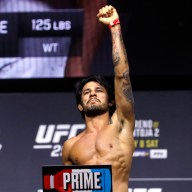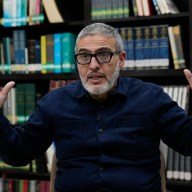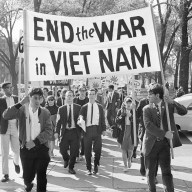Robert Greene didn’t want to make a film about Christine Chubbuck. In fact, he sat on the idea for over a decade. It’s a horrifying story: She was news reporter in Sarasota, Florida who shot herself on the air in 1974 and died 14 hours later. Chubbuck suffered from depression and loneliness and very little is known of her apart from her death. Greene did make a film about Chubbuck, but one that questions its own existence. “Kate Plays Christine” is a hybrid documentary that follows actress Kate Lyn Sheil as she pretends to prepares for a fictitious movie-within-the-movie. As she travels to Sarasota, talking to those who knew her, getting a spray tan, inserting contact lenses to turn her eyes from blue to brown, she finds the ethics of portraying someone primarily known for an on-air suicide. Greene — whose last film, “Actress,” was another hybrid documentary about a female performer where the line between real and staged was constantly blurred — talks to us about making a film that turns in on itself. The story of Christine Chubbuck is one that sort of turns on the person hearing it for the first time: You’re filled with fascination, but only because of the way she died. Then you have to question if that’s the only reason you’re interested in her in the first place. You’re longtime friends with Kate Lyn Sheil, so there’s a deep foundation of trust between you. What other reasons did you think she’d be an ideal collaborator on this particular film? RELATED: Interview: Director David Lowery on going from indies to Disney’s “Pete’s Dragon” I don’t want to suggest you were manipulating her, but the entire project seems geared to get a reaction that has to be natural and, often, unpleasant. I know you had many women on this film, including three female producers. Did you do that in part to make sure you were being checked as you were making a film about a woman? I sometimes find myself mansplaining then not catching myself till after. There was a piece in Film Comment by Eric Hynes that read “Kate Plays Christine” through the lens of the New Journalism movement of the ’60s and ’70s, which was about asking similar questions about intent and ethics. Was that an inspiration for this? An argument can certainly be made that any time you capture someone’s real life, whether it’s documentary or journalism, you’re committing a crime. RELATED: A new book, “In Search of Lost Films,” looks at movies that have been gone AWOL Because you’re allowing so much chance in the actual shooting of the film, part of the film seems to be questioning what the role of the director on a film even is. Especially in documentaries, it’s in the editing that filmmakers make their presence known. Frederick Wiseman can seem passive as he’s shooting, but his voice comes through in the way that they’re structured, which scenes he chose, how they play of each other. We haven’t really discussed Christine Chubbuck a lot, but the film has a lot to say about her without, often, directly addressing her life.
The only reason I made the film in the first place is Christine Chubbuck’s story made me feel all these feelings of anxiety. They made me feel maybe you shouldn’t tell certain stories and maybe you shouldn’t show certain things. That was the thing I felt 10 years ago when I first heard about Christine Chubbuck’s story; that’s what I felt working with Kate; that’s what I felt as I was shooting the final scene; that’s what I felt when I was editing; and that’s what I’ve felt every time we’ve had a screening since. As documentary filmmakers, or filmmakers in general, we should be questioning every image we create. We should ask we we’re doing it and what is it adding to the world and what is it subtracting.
She has an awareness to her performing style that just draws you in — meaning she always seems to know you’re watching her in a movie. For me, having that actorly awareness in a nonfiction setting was going to create so many layers of consciousness that you could observe. She’s being documented but she’s also performing, but she’s also trying to perform these other things. When you look at her you can see all these things churning in her head. She’s also shy and soft-spoken, and incredibly thoughtful and incredibly smart. For me, having a camera on her while she was trying to basically negotiate this impossible role, I knew all that would come through. You could put the camera on another actor, and this film would be incredibly indulgent. They’d think, ‘What am I going to do, how am I going to perform this, me, me, me, me.’ Kate makes it bigger than it could be, just in the way she processes it.
The thing is, I had to be a little manipulative, because that was part of the process. There was an awareness of that manipulation was well. She knew I was putting her out there, and I was capturing material that was filling her with anxiety. She was satisfied that I was getting what I needed, but she was still filled with anxiety. That’s what you see over the course of the film, which comes to a head in the final scene. Because that final scene is hers. There were a couple bits of direction I gave her, but it really was hers. I still really felt under water, in the sense that I just didn’t know how she felt. If you don’t know if your friend is upset with you because of what you’re doing, it’s very hard. But she’d tell me it was OK. Part of her allowed herself to be frustrated, and part of her knew this what we needed to make the film work. It’s a crazy line. I don’t even know where that line is myself sometimes. That why, to me, the film remains a documentary. Because I’m not in control of that line. Sometimes I think Kate was more in control than any of us. Sometimes I feel she was reacting to this crazy idea. It’s tricky.
We had plenty of people surrounding us saying, “What is that about?” “What are you thinking here?” “You know what’s not quite correct?” I feel like that’s my entire life. I fill my life with smart women who tell me I’m wrong. My wife is probably the biggest example of all of them. From the beginning, my wife said she didn’t think this movie should be made, but if anyone should do it, it should be me. Because I always question things. It’s not that you can’t do something; it’s that you should consider it from certain angles. My sister-in-law watched a late cut of the movie and gave these direct, incisive notes that were like, “I don’t feel any of x, y or z, and you better get them in there.” If you’re a man making a film about a woman, it’s important to listen to women. It was a good rule for life that happened to be a good rule for this movie.
I have the worst triumvirate of mansplaining tendencies, which is that I’m a documentary filmmaker who thinks about theory, I’m a dad and I’m a professor. It’s three voices that can be condescending and s—tty.
I’m aware of that stuff without being any sort of student of it. To me, it comes more from cinema. Jacques Rivette may have been the first person to say every film is a documentary of the actor’s acting. Those were always the most enticing, interesting ideas to me when I was an undergraduate studying film. It was Cassavetes, Fassbinder and Godard who made me think there’s another way of looking at the relationship between fiction and nonfiction in cinema. When I read New Journalism piece — which I’m still crazy unfamiliar with — it all resonated with me. The problem is now, if I go back and read that stuff, it feels second nature to me, because I’ve been working in this mode of thinking for some time. My favorite books are John Berger’s “Ways of Seeing and Janet Malcolm’s “The Journalist and the Murderer.” That’s where I’m coming from.
There’s two ways of looking at documentary filmmaking. There’s one that it’s an idealistic thing — good people wanting to change the world. There’s also a way of looking at it that this is a f—ked up thing to do. Making a film about somebody’s real life is a villainous act, whether it ends up being met positively or not. But at its core its villainous. I’ve had this discussion with filmmakers many times where I say, “You know what we do is pretty messed-up.” And they’re like, “No, it’s good to change the world.” And I say, “I love that you see that, but I see this.” I don’t think it’s cynical, actually. In “The Journalist and the Murderer,” Janet Malcolm began with this scathing take on journalism and the whole idea of taking someone’s life story and taking quotes from it and turning them into characters. Half the journalism world thought she was a fraud who undercut the entire profession. The other half were like, “Thank god someone said that.” It doesn’t invalidate filmmaking and it doesn’t invalidate journalism. But it does make you think about what it means.
For fiction films we have this standard idea of what it means to be a director. That comes from this very macho perspective. We have Sam Fuller shooting a gun with an eyepatch. We have Hitchcock master-manipulating women. Those are cliches and they’re not quite true. When you delve deeper in those filmmakers’ processes, they’re often very collaborative. Conversely, with a documentary filmmaker, it’s as if they’re not artists at all. It’s as if they’re just there to capture reality. It’s the “fly on the wall” cliche. Albert Maysles famously said it’s not a fly on the wall, because a fly is an unthinking, unfeeling thing. I’m thinking and feeling everything. There’s another idea that documentary filmmakers are not supposed to make any decisions and are not supposed to direct. I embrace some middle ground between the two. I come in with strong concepts and strong ideas, but one of the ideas is there is a big, gaping hole between this idea and that idea. And I have no idea how to get from Point A to Point Z.
My idea as the director is to capture as many conflicting, interesting, alive moments as I possibly can. It’s as an editor where I’m exerting control. I’m purposefully not exerting control when I’m shooting. But editing is like passive aggressive macho-ism. It’s like hidden control freak-iness. Every editor I know is secretly the biggest control freak you know. It’s so beautifully powerful and exciting and crippled with all these ethical considerations. Every time you make an edit, every time you cut someone’s breath off for a third of a second, it’s an ethical consideration. But it’s also thrilling and incredibly satisfying to do it.
The film is a failure if it doesn’t evoke some deeper understanding of Christine and depression in general. All these questions — Is Kate acting? Is Kate performing on some level? Why is the director asking us to look at this? Did the director ask her to run in the water? — all that stuff is really meant to make you think of intention and think of decision-making. That evokes your own decision-making in your daily life. When you think about the fact that you’re questioning Kate all the time, you think that Christine was someone who was questioned all the time. She would go to person to person and say, “I’m thinking of killing myself.” And she was considered a performer being melodramatic. There’s a lot of echoes in the process of making this film and the process of simply living a life. The last thing we wanted to do was make an academic exercise. Hopefully it evokes some deeper, unrattling, unnerving sense of what it means to be dealing with the stuff she was dealing with.
Robert Greene on the ethics of making ‘Kate Plays Christine’
Follow Matt Prigge on Twitter @mattprigge


















